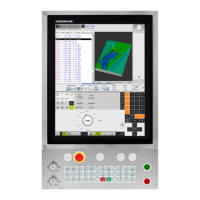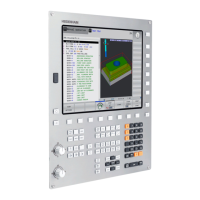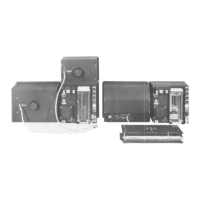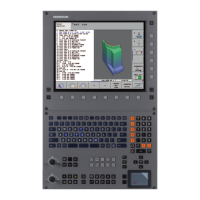Fundamentals, File Management | Fundamentals
4
HEIDENHAIN | TNC 620 | Conversational Programming User's Manual | 10/2017
145
Workpiece coordinate system W-CS
The workpiece coordinate system is a 3-D Cartesian coordinate
system. Its coordinate origin is the active preset.
The position and orientation of the workpiece coordinate system
depend on the BASE TRANSFORM. values of the active line in the
preset table.
Soft key Application
The user determines the position and orientation
of the workpiece coordinate system by using a 3-
D touch probe for example. The control saves the
values determined with respect to the basic coordi-
nate system as BASE TRANSFORM. values in the
preset management.
Further information: "Managing presets", page 644
In the workpiece coordinate system the user defines the position
and orientation of the working plane coordinate system with use of
transformations.
Transformations in the workpiece coordinate system:
3D ROT functions
PLANE functions
Cycle 19 WORKING PLANE
Cycle 7 DATUM SHIFT
(shifting before tilting the working plane)
Cycle 8 MIRROR IMAGE
(mirroring before tilting the working plane)
The result of transformations built up on each other
depends on the programming sequence.
In every coordinate system, program only the specified
(recommended) transformations. This applies to both
setting and resetting the transformations. Any other use
may lead to unexpected or undesired results. Please
observe the following programming notes.
Programming notes:
Transformations (mirroring and shifting) that are
programmed before the PLANE functions (except
for PLANE AXIAL) will change the position of the tilt
datum (origin of the working plane coordinate system
WPL-CS) and the orientation of the rotary axes
If you just program a shift, then only the position
of the tilt datum will change
If you just program mirroring, then only the
orientation of the rotary axes will change
When used in conjunction with PLANE AXIAL
and Cycle 19, the programmed transformations
(mirroring, rotation and scaling) do not affect the
position of the tilt datum or the orientation of the
rotary axes

